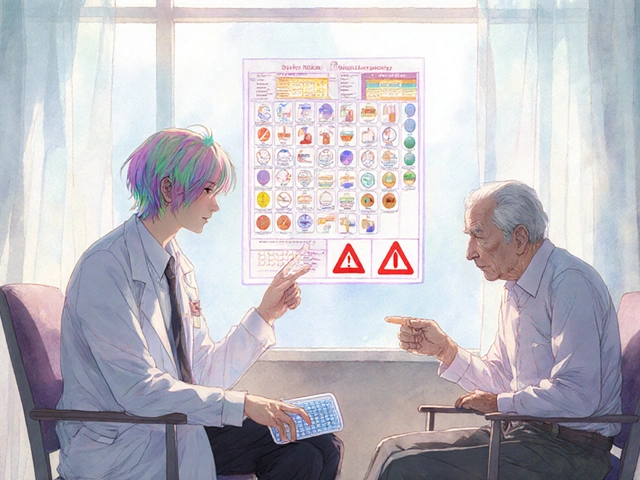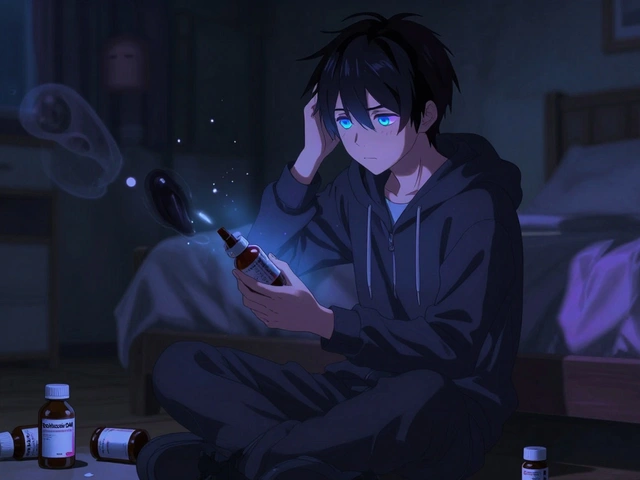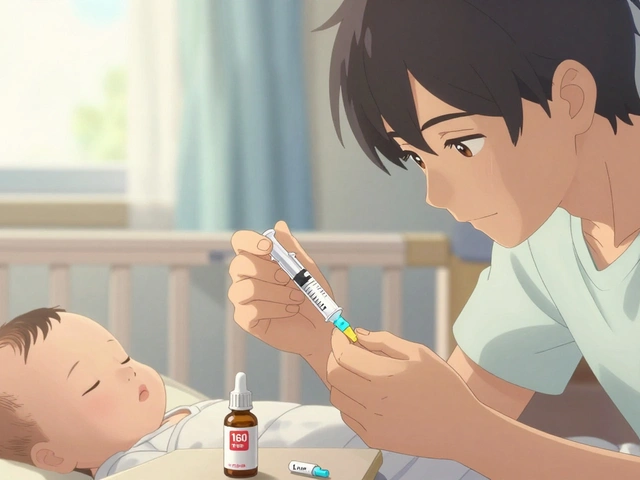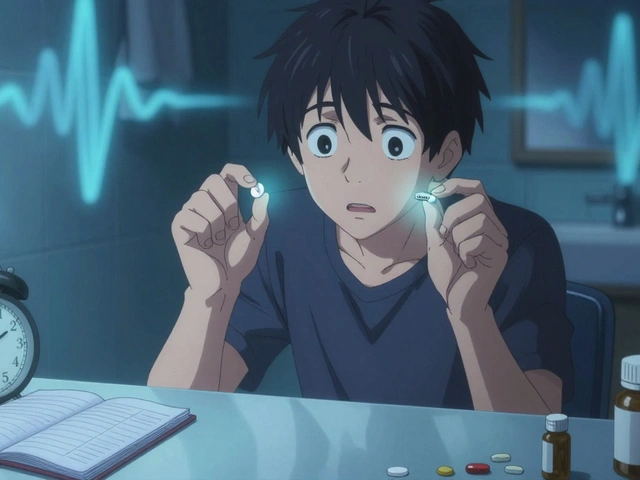Menopause Hormone Therapy Risk Calculator
Personalized Hormone Therapy Assessment
Based on current medical research and your individual circumstances
Your Benefit-to-Risk Ratio
Calculating...Potential Benefits
Potential Risks
Personalized Recommendation
When menopause hits, your body isn’t just slowing down-it’s rewiring itself. Hot flashes that wake you up at 3 a.m., dry skin that itches no matter how much lotion you use, mood swings that make you wonder if you’ve lost your mind. For many women, these aren’t just inconveniences. They’re life-disrupting. That’s why so many turn to hormone therapy. But here’s the thing: menopause hormone therapy isn’t a one-size-fits-all fix. It’s a tool. And like any tool, it can help-or hurt-depending on how and when you use it.
What Hormone Therapy Actually Does
Menopause means your ovaries stop making estrogen and progesterone. That drop triggers a cascade of symptoms: night sweats, vaginal dryness, trouble sleeping, brain fog, even joint pain. Hormone replacement therapy (HRT) replaces those lost hormones to ease the ride. There are two main types: estrogen-only for women who’ve had a hysterectomy, and estrogen plus progestin for those with a uterus. Why the combo? Because estrogen alone can cause the lining of the uterus to thicken, raising the risk of endometrial cancer. Progestin keeps that lining in check.
These aren’t just pills anymore. You can get them as patches stuck to your skin, gels rubbed on your arms, vaginal creams, rings, or even tiny inserts like Intrarosa. Each method delivers hormones differently. Patches and gels go straight into your bloodstream through your skin, skipping your liver. That’s important-because oral pills force your liver to process the hormones first, which can increase your risk of blood clots.
The Real Risks: Numbers You Can’t Ignore
Let’s cut through the noise. Yes, hormone therapy carries risks. But the numbers matter more than the headlines.
According to the Women’s Health Initiative study, after five years of use:
- Heart attack risk goes up by 29%
- Stroke risk increases by 41%
- Breast cancer risk rises by 26%
- Blood clots in the lungs jump by 113%
But here’s the twist: these risks aren’t the same for everyone. If you’re 52 and just started menopause, your risk profile looks very different than if you’re 65 and starting HRT 15 years after your last period. The data shows that women who begin hormone therapy before 60 or within 10 years of menopause have a much better benefit-to-risk ratio. For them, the relief from symptoms often outweighs the risks. For older women, the opposite is true.
And let’s talk about breast cancer. The absolute risk? It climbs from 30 cases per 10,000 women to 38 per 10,000 after five years of use. That’s not nothing-but it’s not a guarantee, either. Most women won’t get it. But you need to know the odds before you decide.
Common Side Effects (And Why They Usually Fade)
Side effects aren’t the same as risks. Side effects are things your body does while adjusting. Most go away in a few months.
- Vaginal spotting or bleeding: Happens in 30-50% of women in the first 3-6 months. It’s not a sign of cancer-it’s your uterus getting used to the hormones. If it keeps going past six months, talk to your doctor.
- Breast tenderness: Affects 20-40%. Feels like your bra is too tight. Often fades after the first cycle.
- Bloating and fluid retention: 15-25% of users feel puffy, especially in the legs. Switching from pills to patches can cut this by 60%.
- Headaches: 10-25% report them. If they’re new or worse, it might be your dose. Lowering estrogen often helps.
- Mood swings or depression: Affects 12-25%. Hormones influence serotonin. If you’ve had depression before, this is something to monitor closely.
Here’s what most women don’t hear: if side effects stick around past three months, it’s not you. It’s the treatment. That’s when you ask your doctor to tweak it-change the dose, switch the delivery method, or try a different type of hormone.

What to Do When Side Effects Won’t Quit
You’re not stuck with them. Around 68% of women find relief by adjusting their dose, according to a 2021 study in the Menopause journal. Here’s how:
- Change the delivery method. If you’re on pills and getting stomach upset or bloating, try a patch or gel. Transdermal options bypass your liver and reduce clot risk by 30-40%.
- Lower the dose. You don’t need the highest dose to feel better. Many women do fine on low-dose estrogen. Less hormone = fewer side effects.
- Switch the progestin. Some progestins cause more bloating or mood swings than others. Micronized progesterone (like Prometrium) is often better tolerated than synthetic versions.
- Try a different combo. Duavee (conjugated estrogen + bazedoxifene) is designed to protect the uterus without traditional progestin. It’s an option if you can’t tolerate progesterone.
One woman I spoke with in Adelaide switched from oral HRT to a daily estrogen gel after six months of constant nausea. Within two weeks, her stomach settled. Within a month, her hot flashes were under control. She didn’t need to quit-she just needed to change the tool.
Alternatives That Actually Work
You don’t have to take hormones to feel better. There are proven non-hormonal options.
- SSRIs and SNRIs: Medications like paroxetine (Brisdelle) reduce hot flashes by 50-60% in 60% of users. They’re not antidepressants here-they’re used at low doses for symptom control.
- Gabapentin: Originally for seizures, it cuts hot flashes by 45%. Good for women who can’t take hormones or SSRIs.
- Clonidine: A blood pressure pill that also reduces hot flashes by 46%. Can cause dry mouth or dizziness, but it’s an option.
- Vaginal DHEA (Intrarosa): A tiny insert that helps with painful sex. It works locally-almost no hormones enter your bloodstream. 70% of users report improvement.
- Vaginal moisturizers and lubricants: Used by 45% of menopausal women. Products like Replens or Hyalo Gyn help with dryness without hormones.
And what about herbal stuff? Black cohosh? Red clover? Soy? The data is messy. Twelve studies involving nearly 2,000 women showed mixed results. Some felt better. Others didn’t. And no one knows if they’re safe long-term. The FDA doesn’t regulate supplements like it does drugs. If you try them, stick with well-known brands and tell your doctor.

When to Say No to Hormones
HRT isn’t for everyone. It’s a hard no if you have:
- A history of breast cancer or endometrial cancer
- Previous stroke, heart attack, or blood clots
- Active liver disease
- Unexplained vaginal bleeding
And if you’re over 60, or more than 10 years past menopause? The risks climb fast. The benefit of symptom relief doesn’t usually outweigh the chance of a stroke or clot. That’s not fear-mongering-it’s science.
The New Wave: What’s Coming Next
Medicine isn’t standing still. A new drug called fezolinetant, which targets brain receptors linked to hot flashes, reduced symptoms by over 50% in clinical trials. It’s under FDA review and could be available by late 2024. It’s not a hormone. It doesn’t affect your breasts or uterus. It just turns down the heat.
Other new options include tissue-selective estrogen complexes and next-gen SERMs that act like estrogen in your bones and brain but not in your breasts or uterus. These could be game-changers-offering relief without the old risks.
One thing’s clear: menopause care is shifting from one-size-fits-all to personalized medicine. Your age, your health history, your symptoms, your preferences-they all matter. There’s no ‘right’ answer. Only the right answer for you.
What to Ask Your Doctor
Don’t leave your appointment without these questions:
- What’s my personal risk for blood clots, stroke, or breast cancer?
- Am I within the ‘window of opportunity’ (under 60 or within 10 years of menopause)?
- What delivery method would work best for my symptoms and lifestyle?
- Are there non-hormonal options I should try first?
- How often should I re-evaluate this treatment?
And remember: if something feels off, speak up. Side effects aren’t something you just have to live with. There’s almost always a better way.
Can hormone therapy cause weight gain?
Hormone therapy itself doesn’t directly cause weight gain. But menopause does-thanks to falling estrogen, which shifts fat storage to the belly. Some women feel bloated from fluid retention when starting HRT, which can feel like weight gain. This usually clears up in a few months. The key is managing overall health: movement, protein intake, and sleep matter more than the hormones.
How long should I stay on hormone therapy?
There’s no fixed timeline. Most women take HRT for 2-5 years to get through the worst symptoms. If symptoms return after stopping, you can restart-especially if you’re under 60. But if you’re using it long-term (more than 5-7 years), your doctor should reassess your risks annually. The goal isn’t lifelong use-it’s symptom control with the lowest possible dose and shortest possible time.
Is it safe to use HRT if I have high blood pressure?
It depends. Oral estrogen can raise blood pressure in some women. If you have controlled hypertension, a transdermal patch or gel is usually safer than pills. Your doctor will monitor your BP closely. If your blood pressure is uncontrolled, HRT may not be recommended until it’s under control. Lifestyle changes-salt reduction, exercise, stress management-are just as important as medication.
Can I take HRT after breast cancer?
Generally, no. Estrogen can stimulate certain types of breast cancer cells. Even low-dose or local estrogen (like vaginal creams) is usually avoided. But some women with severe symptoms may be candidates for non-hormonal options like gabapentin, SSRIs, or the new neurokinin 3 inhibitors. Always talk to your oncologist before considering any treatment.
Do I need to take progesterone if I’ve had a hysterectomy?
No. If your uterus was removed, you don’t need progesterone. Estrogen-only therapy is safe and effective for you. Taking unnecessary progesterone can add side effects like bloating, mood swings, or breast tenderness without benefit. Always confirm your surgical history with your provider before starting treatment.
If you’re navigating menopause right now, know this: you’re not alone. And you don’t have to suffer through it. Whether you choose hormones, non-hormonal meds, or a mix of both, the goal is simple-feel like yourself again. With the right plan, you can.









Sherri Naslund
i read this and thought wow finally someone gets it but then i remembered we live in a world where doctors still think menopause is just 'women being dramatic' and prescribe antidepressants instead of actual hormone balance. my gyno told me to 'try yoga' when i was crying in his office because i couldn't sleep for 3 weeks straight. fuck yoga. i need estrogen, not mindfulness.
Ashley Miller
so let me get this straight... big pharma tells you hormones are dangerous but also tells you to take them? and the real danger is that they don't want you to know about the natural alternatives that actually work? like bio-identical hormones from compounding pharmacies? the FDA doesn't regulate those because they can't patent them. think about it.
Martin Rodrigue
The data presented in this article is largely accurate and aligns with current clinical guidelines from the North American Menopause Society. However, the framing of 'risks' as absolute percentages without contextualizing baseline population rates may induce unnecessary fear. For instance, an increase from 30 to 38 cases per 10,000 represents a relative risk increase of 26%, but an absolute risk increase of only 8 cases per 10,000 women annually. This distinction is clinically significant.
Arun Mohan
look i get it, you guys in the west are obsessed with pills and patches. in india, we’ve been using ashwagandha, shatavari, and turmeric for centuries. no blood clots, no breast cancer fears. just pure ayurveda. you think your science is better? your doctors are just scared to admit traditional medicine works better. you’re poisoning yourselves with synthetic hormones while we’re thriving on herbs. wake up.
Jeff Moeller
menopause isn't a disease it's a transition and we treat it like a glitch in the system instead of a natural phase of life. the real problem isn't estrogen it's that we've built a world that doesn't accommodate women's bodies after 40. we don't give space for rest we don't value wisdom we just push pills and pretend that's healing
Herbert Scheffknecht
i had a friend who went on HRT and within two weeks she was crying at traffic lights and yelling at her dog for breathing too loud. she switched to a patch and it was like a switch flipped. mood swings went from hurricane to gentle breeze. point is: it's not about whether hormones work it's about finding the right delivery. pills are the worst option for most people and nobody tells you that until you're already in therapy hell.
rachna jafri
you think this is about medicine? this is about control. they want you dependent on pills so you keep paying. they don't want you to know about the 3000-year-old Indian herbs that balance hormones without side effects. they don't want you to know that your body knows how to heal itself if you stop poisoning it with processed food and stress. we were never meant to live like this. the west is sick. and you're all just buying the lie.
darnell hunter
While the article presents a comprehensive overview of hormone therapy, it is regrettable that the tone veers into sensationalism rather than maintaining a strictly evidence-based, clinical perspective. The inclusion of anecdotal case studies and emotionally charged language undermines the credibility of what is otherwise a scientifically sound exposition. Such rhetorical choices, while potentially effective for engagement, are inappropriate in medical communication and may contribute to public misunderstanding of risk-benefit ratios.